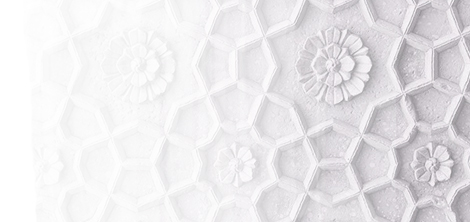Introducing: The Maharani Collection

The Maharani Collection is my exploration into the exceptionally exotic and artisanal world of India’s queens and their jewels. I have hand drawn each design and overseen its conception, by artisans, by hand, in Jaipur, India. Each piece is made with sterling silver, 22 carat gold and precious and semi precious stones.
This exploration started when I first went to India with my mother. I was 11 years old, and remember being amazed at the colours of the sari, which are worn by woman everywhere. The sari and the jewels worn with them, create a goddess like image of India’s women.
Whilst experiencing India’s palaces of glorious architectural detail and grandeur, adorned with frangipani, billowing cottons in peaches and pinks, roaming peacocks and scents so exotic and hypnotizing, I was transported into another time; the time of the Maharani; India’s queens.
Maharani is from Sanskrit; mahārājñī, where mahā means great; and rājñī means queen: the great queens of magical India. The Maharani has always felt like a fairytale, and in this way enigmatic and seductive.
Maharanis have also always been associated with the most impressive jewels the world has ever seen. Luxurious and unapologetically hedonistic, a fashionista’s delight, there is a sense of how easy it must have been for Indian royalty to take the fashion-houses of Paris by storm: dazzling Cartier and Van Cleef & Arpels sets, sheer French chiffon, puff-sleeved blouses, Navratan necklaces, pearl ear danglers; classics that are still celebrated and echoed by contemporary designers like Sabyasachi define the era.
My collection draws inspiration from the great fashion houses that were enormously influenced by the excesses of the Maharani, such as Cartier, whilst also studying Indian history; both artifacts and illustrations dating as far back as the 1st Century, where the Indian love of jewellery held mystique, power and reverence. The collection has also been influenced by women in small Indian villages, adorned with bangles and anklets and earrings, that arrest you with their regal presence.
The Indian subcontinent has the longest continuous legacy of jewellery-making, with a history of over 5,000 years.[1] Using jewellery as a store of capital remains more common in India than in most modern societies, and gold appears always to have been strongly preferred for the metal.
Royal Hamam’s Maharani Collection offers the exoticness of India’s jewels in a refined, approachable, wearable, beautiful way.
The Maharani Collection is for the queen in us all.
[1] Untracht, Oppi. Traditional Jewelry of India. New York: Abrams, 1997 ISBN 0-8109-3886-3. p15.





